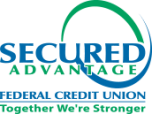Retirement. It seems like a lifetime away, right? Probably something you plan to worry about when you’re a little closer to your retirement date. However, financial experts suggest that the best time to start planning is in your 20s when you typically start earning a steady paycheck.
To put it into perspective, if you start saving at 25 and put away $3,000 a year for 10 years, by the time you reach 65, your $30,000 investment could grow to more than $338,000.* Regardless of your retirement date, it’s never too early to start planning for your retirement. You may be asking, “Where is the best place to start?” and “How should I invest my money to maximize the returns I see at retirement?” Both of these are great questions that we will delve into on this post.
Set your goals
This applies to 20-somethings, 30-somethings, and 40-somethings. How do you know what steps to take if you don’t know where you’re going?
Sit down and figure out your goals. Do you want to buy a house one day? How long do you need to rent and save money? What “bad debt” do you need to pay off now to help you in the long run? These answers may change as life circumstances change, but it’s helpful to know what your goals are and create a plan to achieve them before you set out on your savings adventure.
Take advantage of your employee benefits
Does your company offer a retirement savings account? Most full-time jobs will offer either a 401(k) or a SIMPLE IRA (Savings Incentive Match Plan for Employees Individual Retirement Account). It’s important to understand what these accounts are, how they work, and whether or not it’s a viable option for you. What’s the difference in a 401(k) and a SIMPLE IRA?
A 401(k) is an investment account you make contributions to out of each paycheck. If your employer matches your contribution up to a certain percentage, that’s free money going into your 401(k) in addition to the contributions you’re making.
A SIMPLE IRA is a tax-deferred employer-provided retirement plan. Like a 401(k), you make pre-tax contributions from your paycheck, and your employer can also elect to match your contributions up to a certain percentage. Unlike a ROTH IRA, when you reach retirement age and begin drawing from the SIMPLE IRA, you will pay taxes on the money you’ve saved.
Good debt vs. bad debt
Believe it or not, there is such a thing as good debt. Debt to buy a home or to start a business is considered good debt as it can be used as collateral. To our 20-somethings, listen up! Consumer debt – credit cards, car loans, and student loans – are always bad. Most consumer debt comes with high-interest rates, which only hurt you as you get older.
No matter what age you are, the best thing you can do is to avoid buying things you can’t afford. But, if you have debt or need to go into debt for a major purchase, have a plan to get out of that debt promptly. Look for places in your monthly budget where you can reduce spending and cut unnecessary costs.
Check out debt consolidation and refinancing options
Consolidating debt and refinancing loans are two great ways to save money on your monthly payments. Debt consolidation is typically used for unsecured debt and is especially effective for high-interest debt like credit cards, while refinancing a loan enables borrowers to “redo” an existing loan to get a lower monthly payment, different term length or a more convenient payment structure.
Both options are a great way of saving money each month. Ideally, you’d be able to measure the savings you’re seeing and put that toward your retirement planning. It might not sound like a lot of money, but even if you were able to save $50 a month, at the end of a year you’d have $600 to put toward your retirement.
Do you have debt that can be consolidated? Do you have loans that can be refinanced? You never know what your options are until you ask. Check with someone at our branch to see if we can save you some money each month to put toward your retirement.
Truth is, there are a dozen different ways you can prepare for retirement early and start saving money. You just have to find the ways that work for you.



